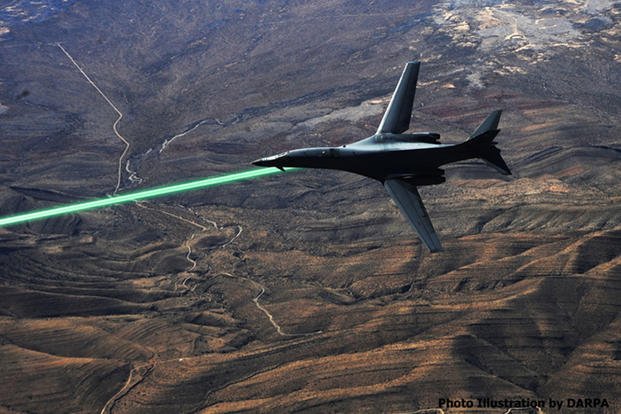The Pentagon is shelving a directed-energy program it was hoping to use in space to destroy enemy intercontinental ballistic missiles in their boost phase.
Dr. Mike Griffin, Under Secretary of Defense for Research and Engineering, told audiences at the 2019 Defense News Conference that the Defense Department is "deferring work on neutral particle beams indefinitely."
"It's just not near enough term," he said Wednesday at the conference outside Washington, D.C.
Instead, the DoD will need to focus on directed-energy and laser programs that can produce more power and be tested and executed faster on space platforms and aircraft, Griffin said, adding that his department is investing more research into high-powered microwaves.
Related: Laser Weapons Are Future for Missile Defense, Space, Expert Says
"We're focusing on nearer term applications of directed energy, particularly lasers of higher power than we currently have," he said. "We need to be in the hundreds of kilowatts realm, and we are prioritizing that."
The Defense Department was hoping to use neutral particle beam (NPB) weapons as space-based anti-missile systems to dismantle ICBMs in their boost phase shortly after takeoff. The Pentagon first tested an NPB concept in 1989 as part of an experiment called Beam Accelerator Aboard a Rocket, or BEAR, according to DefenseOne.
Neutral particle beams aren't lasers, but operate in similar ways. They use subatomic particles to achieve effects, or "beams composed of accelerated subatomic particles traveling at near-light speed," DefenseOne reported. Laser photons travel at light speed.
Neutral particle beams also travel "in straight lines" and cannot be impaired by electromagnetic fields, according to DefenseOne.
The Missile Defense Agency requested $34 million to initiate neutral particle beam development. But in the House's version of the fiscal 2020 National Defense Authorization Act, lawmakers requested an extensive study first. The MDA was hoping to test neutral particle beams in orbit by 2023.
As part of a larger Pentagon effort to expedite weapons programs and get them in the field faster, Griffin said directed energy testing needs to accelerate for researchers and developers to understand the minutiae of the systems and how to improve them.
"We need to better understand the lethality of such systems, understand things like beam control, and we need to know how to scale them up in practical ways," he said.
"There are a lot of practical problems with real-world weapons systems, and we need to dig into those," he added.
DoD officials have long touted the use of space-based sensors and weapons, which they say would be able to monitor, detect, track and impair missile launches.
Earlier this year, President Donald Trump called for the best cutting-edge missile defense weapons and systems as Pentagon officials unveiled the long-delayed Missile Defense Review, the DoD's blueprint to address how the U.S. can best defend against missile threats from around the world.
"We will ensure that enemy missiles know no sanctuary on Earth or in the skies above," Trump said during a speech before service secretaries, lawmakers, troops and press in the Pentagon auditorium Jan. 17.
The MDR was originally due late 2017.
According to the review, the Pentagon believes it will need a mix of ground, air and space capabilities to stay ahead of advanced threats.
"New DoD analysis will evaluate the possible effectiveness of space-based interceptor technologies and their cost-effectiveness when compared to other systems based on land, sea, and in the air," the study said.
-- Oriana Pawlyk can be reached at oriana.pawlyk@military.com. Follow her on Twitter at @Oriana0214.
Read more: 10 Things You Didn't Know About Jim Mattis from His New Memoir 'Call Sign Chaos'












